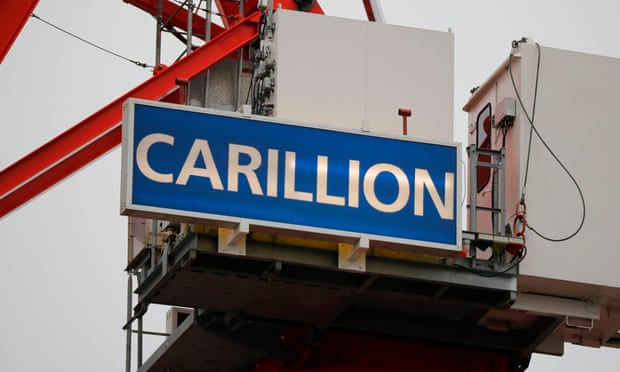The collapse of the construction giant Carillion, which has put thousands of jobs and numerous projects at risk, was shocking, but not entirely surprising. Some hedge fund managers were so sure the company’s problems were mounting they gambled on the share price plunging and made millions. The warning signs they were watching included:
1. Profit warnings
Three profit warnings in five months gave the clearest and most public signal that Carillion was in serious trouble. The first came on 10 July when the company shocked the market with a £845m writedown on contract values and the chief executive, Richard Howson, stepped down. A second warning came in September, and a third in November as its financial woes deepened. Carillion shares plunged from 192p before the first warning to just 14p on Friday, the last day of trading.
2. Short-selling
Hedge funds and other financial speculators had been shorting Carillion shares, betting the firm would hit trouble, even before the profit warnings. Short-sellers borrow the shares from other investors in return for a fee. They then sell the shares in the belief they will be able to buy them back cheaper in future. If it works, they make a profit and return the shares to the original investor. At one point last summer, 25% of Carillion’s shares were shorted. Among the short-sellers were BlackRock, whose advisers include the former chancellor George Osborne, Italian-run Kairos and SFM UK, a fund linked to the billionaire financier George Soros.
3. Mounting debts and pension deficit
Spiralling debts and a huge pension deficit signalled the extent of the problems and ultimately proved Carillion’s downfall. The company’s debts soared by more than 50% to £900m between September and its collapse this week and it had a pension black hole of about £580m – although experts expect the final figure to be higher.
Q&AWhat went wrong for Carillion?
Show

Carillion relied on major contracts, some of which proved much less lucrative than it thought.
In 2018 it slashed the value of them by £845m, of which £375m related to major public-private partnerships (PPPs) such as Royal Liverpool University hospital.
As its contracts underperformed, its debts soared to £900m.
The company needed a £300m cash injection, but the banks that lent it money refused to put more in.
The government also refused to step in and bail the firm out.
That left the company unable to continue trading and forced it to go into liquidation.
4. Delaying payments to subcontractors
The Federation of Small Businesses wrote to the company in July after suppliers complained to the trade body that they were being made to wait 120 days to be paid, double generally accepted 60-day maximum. It is thought Carillion owes money to about 30,000 small firms.
5. Complex financing arrangements
Carillion was using increasingly unusual methods to secure finance – a sign it was struggling to access more traditional sources, from banks and standard bonds. The company had raised £112m through a Schuldschein bond, a market that requires less public disclosure of financial detail. It had also reportedly turned to “reverse factoring” where, for a fee, banks paid Carillion’s suppliers, allowing the company to settle up later.
6. The cracks were visible
One of Carillion’s most problematic contracts was the construction of the Royal Liverpool university hospital. The project was delayed after workers found “extensive” asbestos on site and cracks in concrete beams. Originally slated to open in March last year, the hospital remains unfinished. It was one of the central issues identified in the first profit warning.
- Follow Guardian Business on Twitter at @BusinessDesk, or sign up to the daily Business Today email here.









